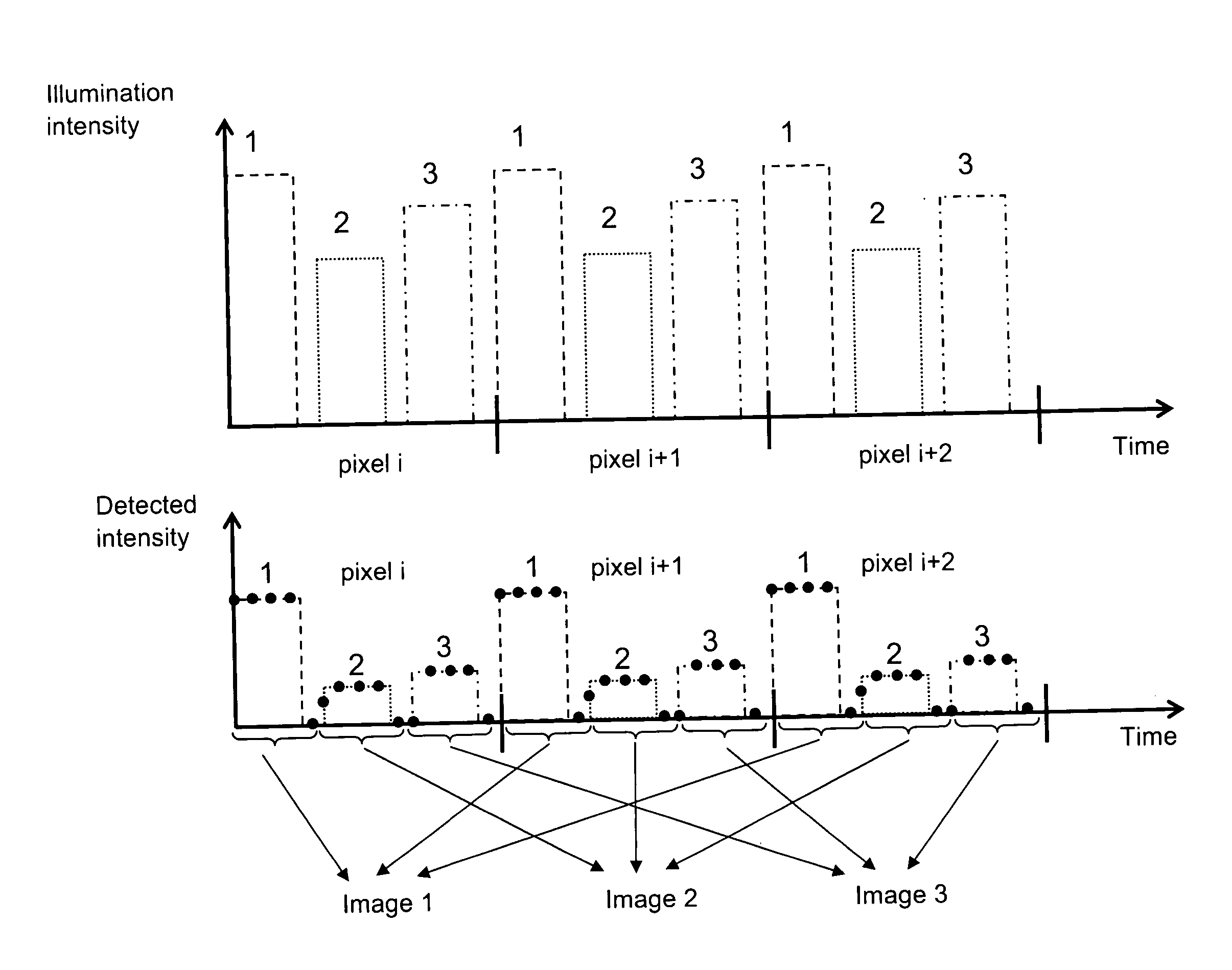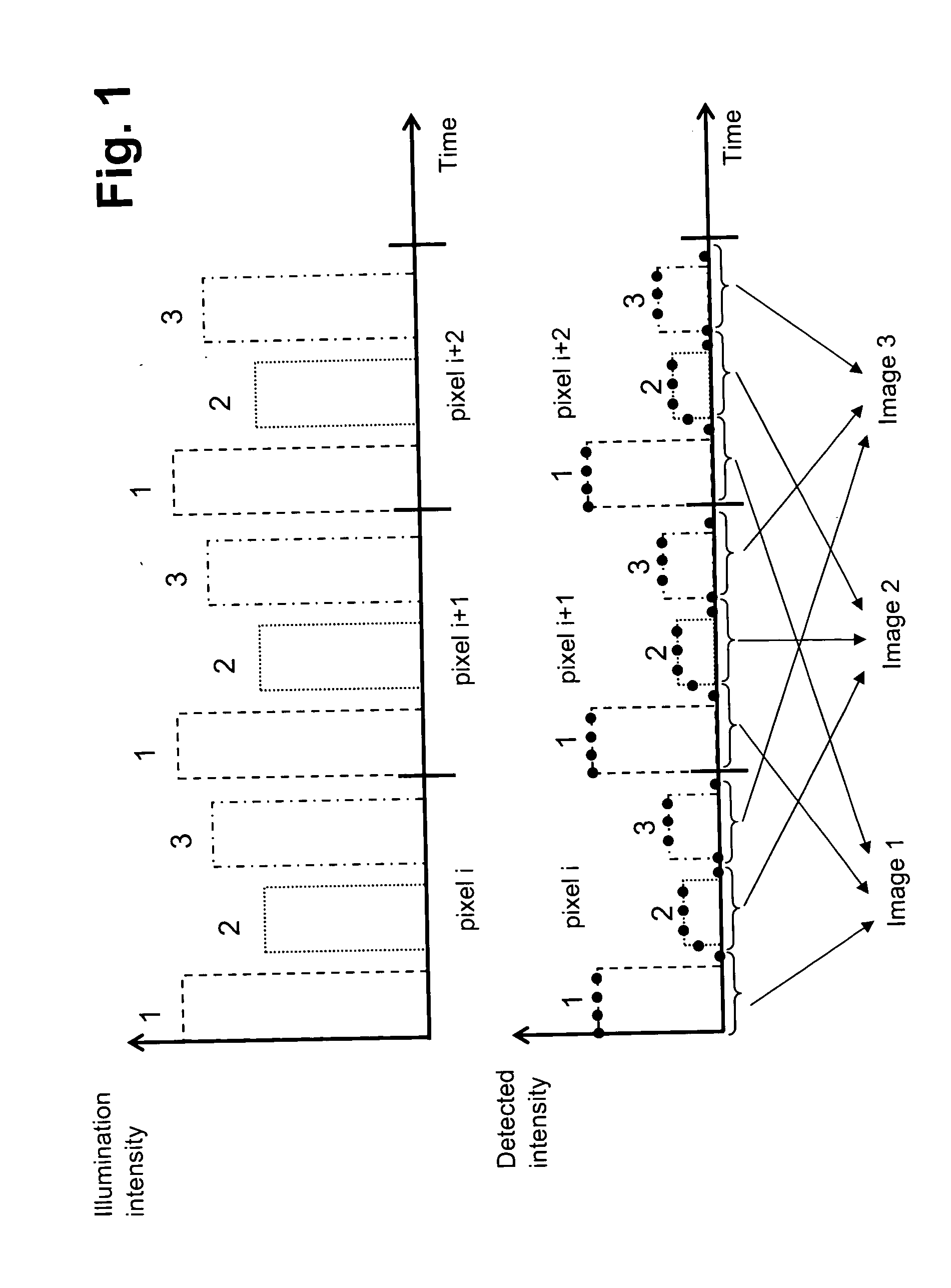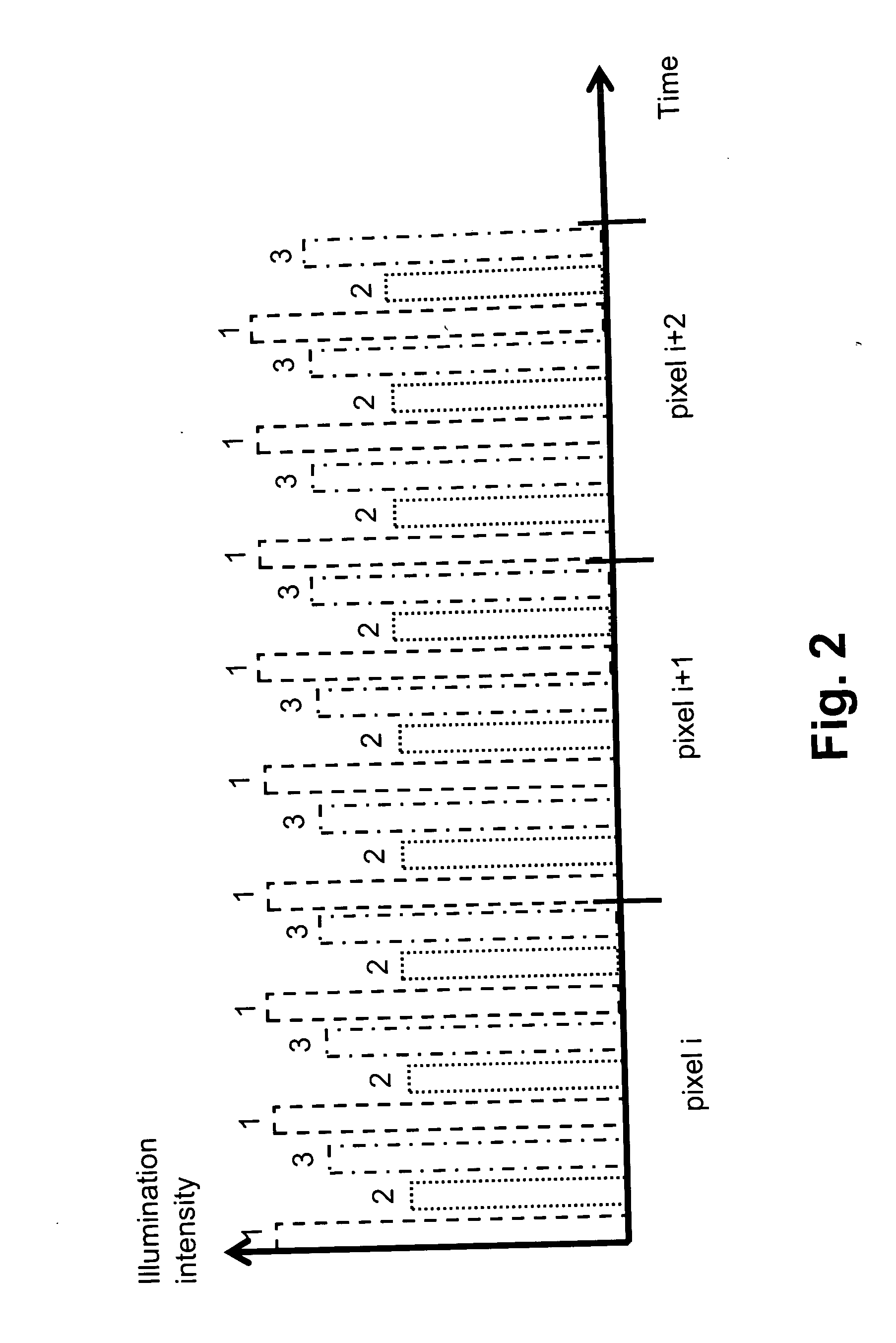Method and device for separating different emission wavelengths in a scanning microscope
a scanning microscope and emission wavelength technology, applied in the direction of instruments, electric discharge lamps,spectrum investigation, etc., can solve the problems of sequential scan, high cost, and multiple scanning of specimens, and achieve the effect of increasing imaging speed
- Summary
- Abstract
- Description
- Claims
- Application Information
AI Technical Summary
Benefits of technology
Problems solved by technology
Method used
Image
Examples
Embodiment Construction
[0029] With reference being had to FIG. 4, FIG. 1 shows two diagrams whereby the illumination intensity of specimen 4 over the course of time of the scanning procedure is depicted in the upper diagram. Specimen 4 is irradiated with a total of three excitation wavelengths 1, 2, 3 according to a predefinable illumination scheme. In the embodiment depicted in FIG. 1, an illumination scheme has been chosen which shows a time sequence of applied individual excitation wavelengths 1, 2, 3 that recurs regularly over the course of time of the scanning procedure. Here, the recurring sequence has been selected in such a way that a complete cycle of the sequence corresponds to one pixel of the later image.
[0030] The lower diagram shows the detected intensity of the emission wavelengths that correspond to the excitation wavelengths 1, 2, 3 over the course of time of the scanning procedure. The detector 5 is read out separately for each applied excitation wavelength 1, 2, 3. The reading-out of t...
PUM
 Login to View More
Login to View More Abstract
Description
Claims
Application Information
 Login to View More
Login to View More - R&D
- Intellectual Property
- Life Sciences
- Materials
- Tech Scout
- Unparalleled Data Quality
- Higher Quality Content
- 60% Fewer Hallucinations
Browse by: Latest US Patents, China's latest patents, Technical Efficacy Thesaurus, Application Domain, Technology Topic, Popular Technical Reports.
© 2025 PatSnap. All rights reserved.Legal|Privacy policy|Modern Slavery Act Transparency Statement|Sitemap|About US| Contact US: help@patsnap.com



